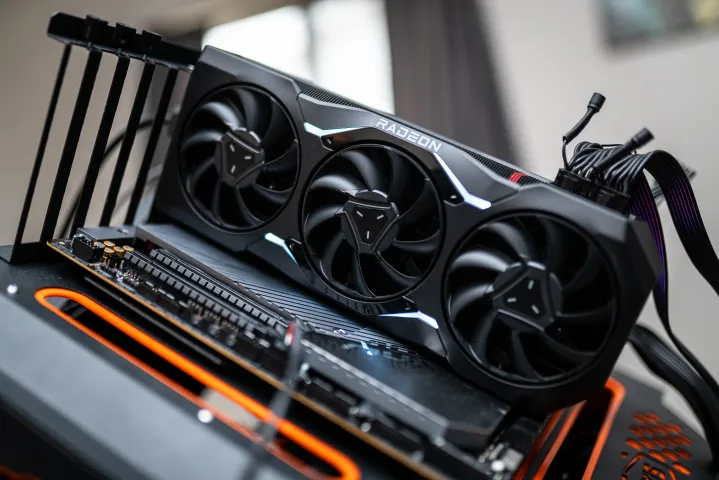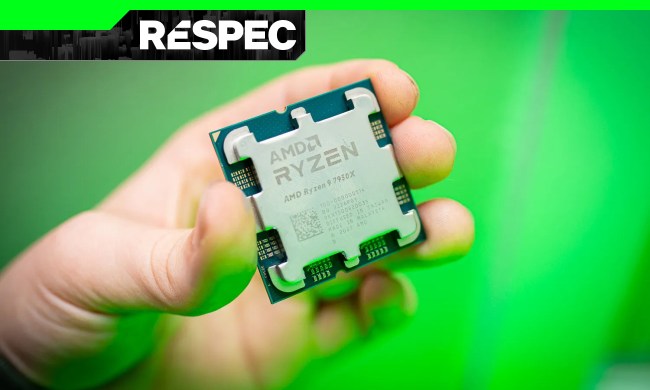
We’re on the brink of a new generation of graphics cards. AMD, Nvidia, and even Intel have all hinted that we’ll see new graphics cards this year, and if you’ve been sitting on your GPU for a while, you’ll probably be eyeing an upgrade.
Upgrading your graphics card isn’t as simple as looking up a few reviews and making a decision, though. If you get too eager to buy a shiny new GPU, you could be missing out on extra performance, better value, or even additional features. If you’re looking to upgrade your GPU soon, make sure to follow these guiding principles.
Forget the name

Names matter. It’s easy to write them off, but there’s a reason Nvidia “unlaunched” the RTX 4080 12GB in the previous generation, and there’s a reason AMD released the RX 7900 GRE when it already had an RX 7900 XTX and RX 7900 XT. Names are powerful, and they can misguide a buying decision in a big way.
It’s easy to get a grip on the product stack from AMD and Nvidia. A decently informed buyer knows that an RX 7700 XT is worse than an RX 7800 XT, and that the RTX 4070 Super is better than an RTX 4060 Ti. The bigger number is better. The problem is that there isn’t a linear performance or price increase between each step in the lineup, and sometimes, Nvidia and AMD use that to their advantage.
The aforementioned RX 7700 XT and RX 7800 XT are a prime example of that. AMD released these two graphics cards at the same time for $450 and $500, respectively, despite the fact that the RX 7700 XT was much slower. And now, months away from launch, you can commonly find the RX 7700 XT for around $370 while the RX 7800 XT has held steady at $500. If you bought the RX 7700 XT right away, you got a bad deal.
This is where reviews are important. Nvidia, AMD, and Intel are clever with how they price their products, but reviews can dig through the numbers and come to firm conclusions about what gets you the best bang for your buck. In instances where the price is truly off, such as with the RX 7700 XT or RTX 4080, we generally see some sort of correction.
More than a flagship

AMD and Nvidia always release their flagship GPUs first. These cards, now usually selling north of $1,000, kick off a new generation, and they’re the ones that enthusiasts camp out for and debate about on forums. The flagships set the tone for the entire generation, and once again, that can misguide buying decisions.
The impact of that is tough to quantify. A lot of it comes down to “mind share,” or how relevant a particular brand seems. Nvidia is at the top of the GPU market by a significant margin — somewhere between 70% and 80% of the market depending on when/where you look — and it’s no surprise. Despite disappointing releases like the RTX 4060 Ti, Nvidia always comes out on top with its flagships.
There isn’t an answer for a card as monstrous as the RTX 4090 this generation, and in the previous generation, when AMD could match the RTX 3090, Nvidia went out and released an RTX 3090 Ti. These halo products, as they’re called, aren’t in the conversation for most PC gamers. But they set the tone for who’s in the lead when it comes to raw performance.
That narrative just doesn’t hold up lower down the product stack. The RTX 4090 wins the flagship battle, but the dynamic is different between cards like the RX 7800 XT and RTX 4070, where AMD holds a lead. It’s not just AMD, either. If you look down to a card like Intel’s Arc A750, it’s both cheaper and faster than Nvidia’s RTX 3060. Despite that, the RTX 3060 is the most popular GPU on Steam, while the Arc A750 doesn’t even register.
When shopping for your upgrade, try to block out the conversation around GPUs that aren’t in your price range. This works in both directions. If you’re buying a budget card, then ignore the flagship conversation. But if you’re in the market for a flagship, don’t be dissuaded by discourse happening lower down the product stack.
Brand loyalty doesn’t matter

Brand loyalty never pays off with a graphics card. You might be a fan of AMD or Nvidia, or more recently Intel, but there’s no reason to stick with one company over another. That’s not true with all other components, and that’s where things get tricky.
With CPUs, there’s a reason to stick with Intel or AMD. We’re seeing both brands release multiple generations on the same socket, so investing in a platform gives you, well, a platform for future upgrades. The same isn’t true with GPUs. The worst thing that can happen when swapping brands is that you choose to swap back on your next upgrade.
Brand loyalty also has a tendency to reinforce assumptions about one brand or the other. For example, you’ll still commonly find users claiming AMD’s drivers are inferior compared to Nvidia’s on Reddit and forums, despite the fact that the two brands are basically on the same level when it comes to driver support. Similarly, you’ll see a lot of claims about Nvidia’s greed and its overpriced products, even when cards like the RTX 4070 Super deliver an exceptional value.
The only one who wins when you stay loyal to one brand or another is that brand. The way you win is by looking at the products available at the time of your upgrade and making the best decision between them, brand be damned.
Don’t double-dip on upgrades

This is something I’ve seen a lot with new PC gamers. You’ll buy a PC with a lower-end GPU, and after a few months, you start looking at an upgrade. Maybe you started with an RTX 4060 and now you’re looking toward an RTX 4070 that you can snag on sale. Avoid the temptation of upgrading within the same generation.
You’ll get a performance boost, but the same money will take you further if you wait for the following generation. This particularly happens with newer PC gamers, who decide they want something more powerful after seeing what PC gaming has to offer. If you upgrade within the same generation, you’re basically guaranteeing you won’t upgrade in the following generation — assuming you don’t have endless disposable income.
There’s one exception to this rule. If your GPU is no longer doing what you want it to do, it might be a good idea to upgrade within the same generation, particularly if you have a graphics card from an older generation. For instance, you can sell an RTX 3060 right now for around $200 and pick up an RTX 3070 Ti for around $350. That’s a big upgrade for not a lot of money.
These situations are few and far between, however, and it’s always important to keep in mind what the current generation has to offer.
A sensible upgrade

It seems so obvious to only buy what you need, but it’s a principle that’s hard to follow with your gaming PC. You might be tempted to upgrade your graphics card just to see a higher number on your screen, even if that number isn’t doing anything to impact your games or your gameplay experience.
For example, if you have a 1080p monitor that has a 60Hz refresh rate, buying anything above an RTX 3060 isn’t going to do much for you. You’ll see a higher number on your screen, but you haven’t actually changed anything about how your games look or play. It would be better to invest some money in a new gaming monitor rather than a GPU upgrade.
Similarly, you might not play the most demanding games. If you primarily play esports games like Rainbow Six Siege and Valorant, or lighter titles like Rust or Valheim, a GPU upgrade likely won’t improve your experience much in these games. It might be worth sacrificing a bit of visual quality or performance in heavier games like Cyberpunk 2077 rather than jumping the gun on a new graphics card.
The important thing is to take your entire PC setup into account. Think of your PC as a unit, from the computer itself to your monitor, and don’t single your graphics card out as the individual component delivering your gameplay experience. That can guide you in the right direction when upgrading. And more often than not, an upgrade outside of your graphics card will provide a better improvement in your gameplay experience.





